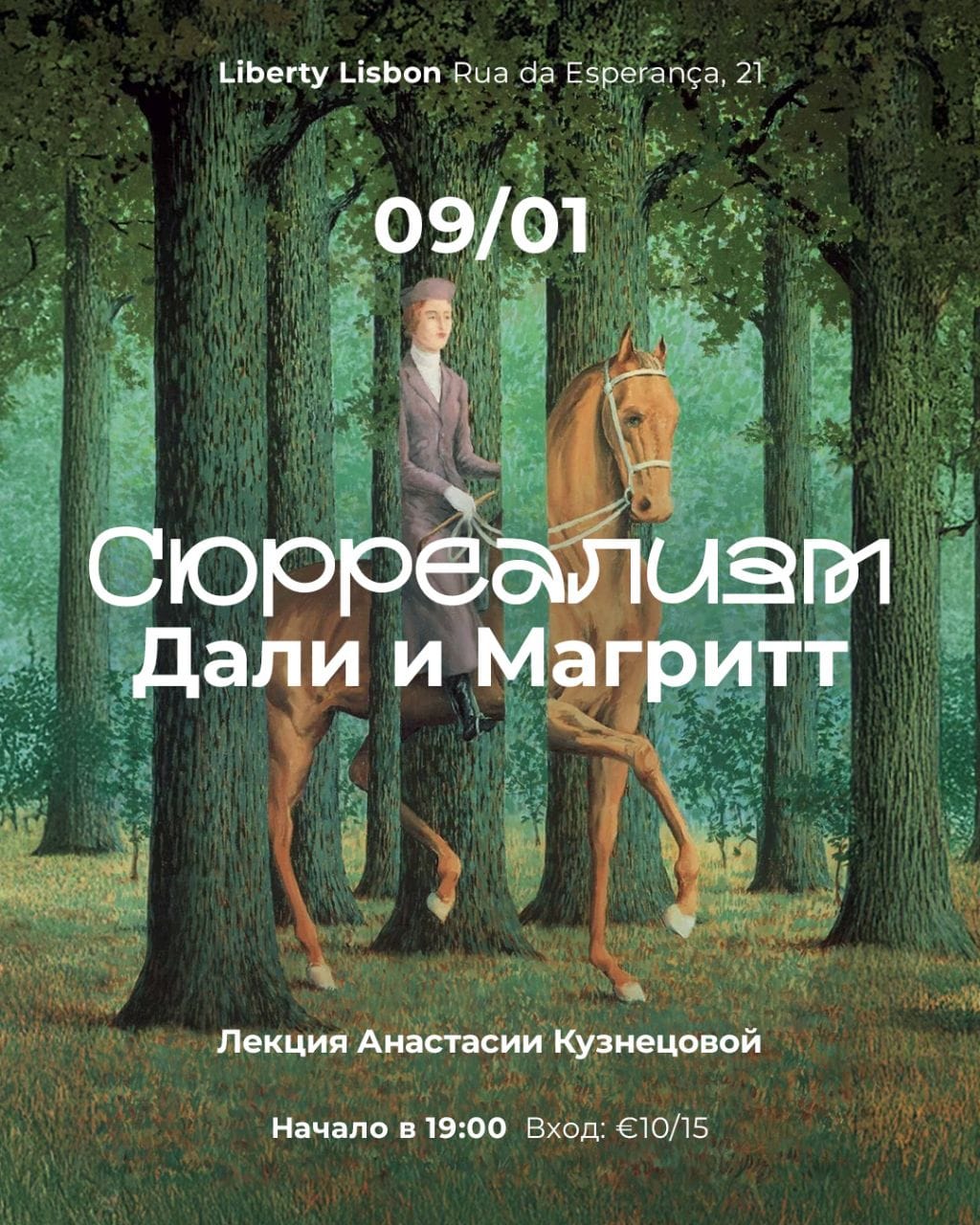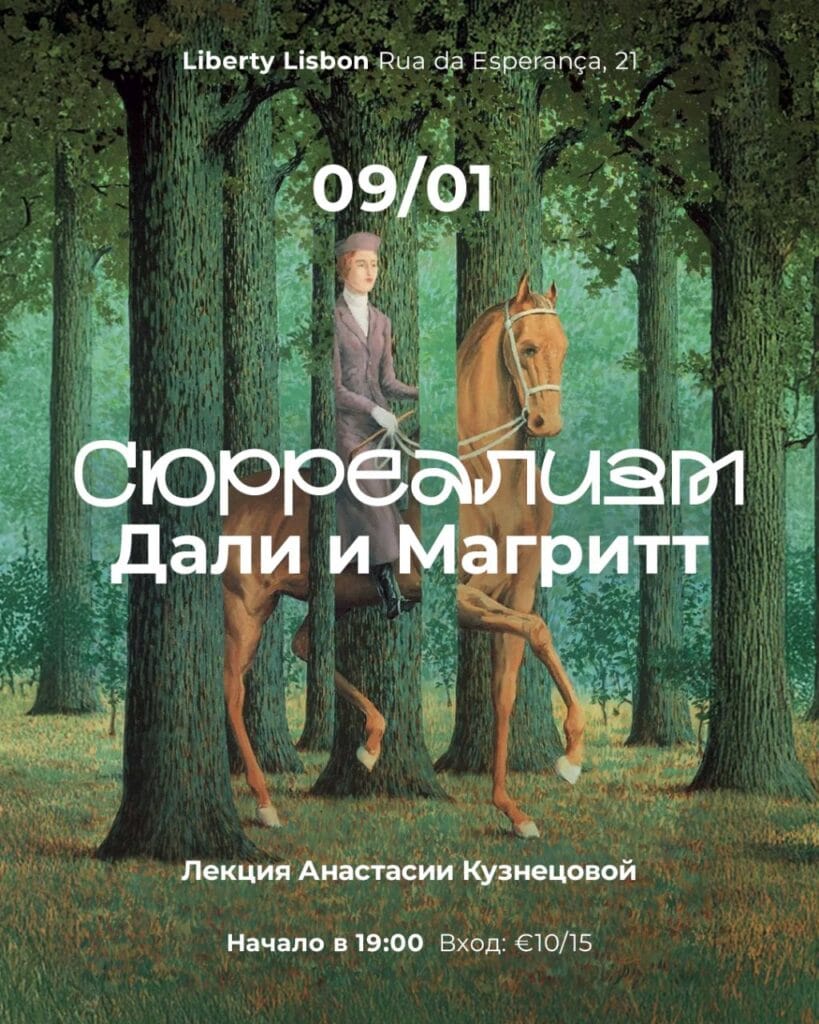
Surrealism. Dali and Magritte

Surrealism emerged in the 1920s as an avant-garde movement in art.
Having studied the then popular theories of Sigmund Freud’s psychoanalysis, artists became more interested in the inner world than ever before. “Pure mental automatism”, “uncontrolled dictation of thoughts, beyond any aesthetic and moral considerations” – this is how they spoke about their work.
Through allegories, plunging into the unconscious: secret desires, thoughts, childhood memories, dreams and fears – surrealists believed that a higher reality lived on the canvas, which was painted by something greater and greater than the artist himself.
A lecture by Anastasia Kuznetsova will examine the movement of surrealism using the example of the biographies of two very different artists: Salvador Dali and Rene Magritte.
Сюрреализм возник в 1920-х годах как авангардное направление в искусстве.
Изучив популярные тогда теории психоанализа Зигмунда Фрейда, художники заинтересовались внутренним миром больше, чем когда-либо. «Чистый психический автоматизм», «бесконтрольная диктовка мыслей, за границами любых эстетических и нравственных соображений» – так они говорили о своём творчестве.
С помощью иносказаний погружаясь в бессознательное: тайные желания, мысли, детские воспоминания, сны и страхи – сюрреалисты считали, что на холсте живёт высшая реальность, которая была написана чем-то бóльшим и великим, чем сам художник.
На лекции Анастасии Кузнецовой рассмотрим течение сюрреализма на примере биографий двух очень разных художников: Сальвадора Дали и Рене Магритта.